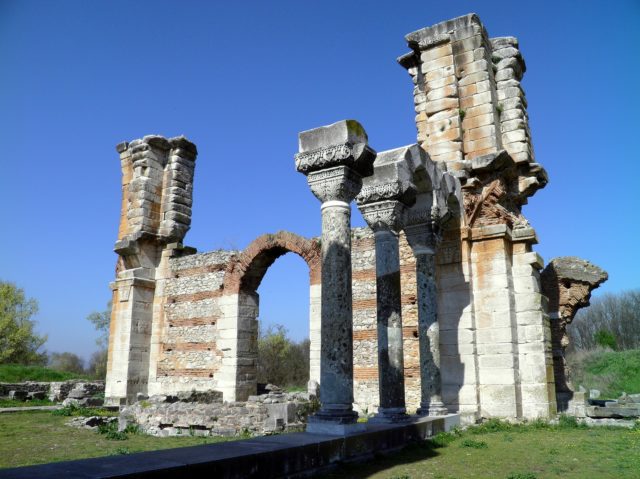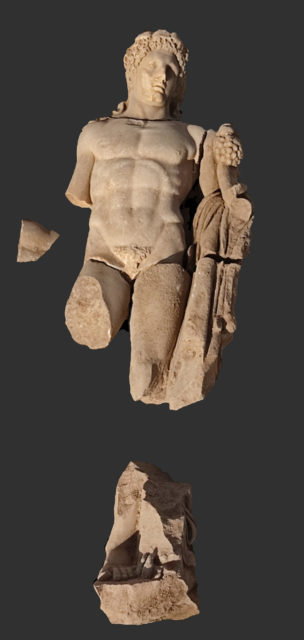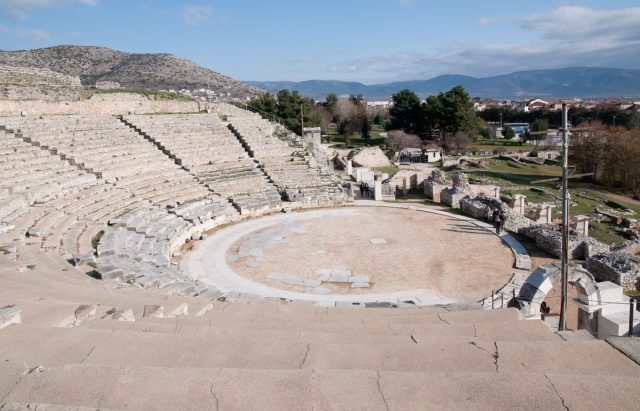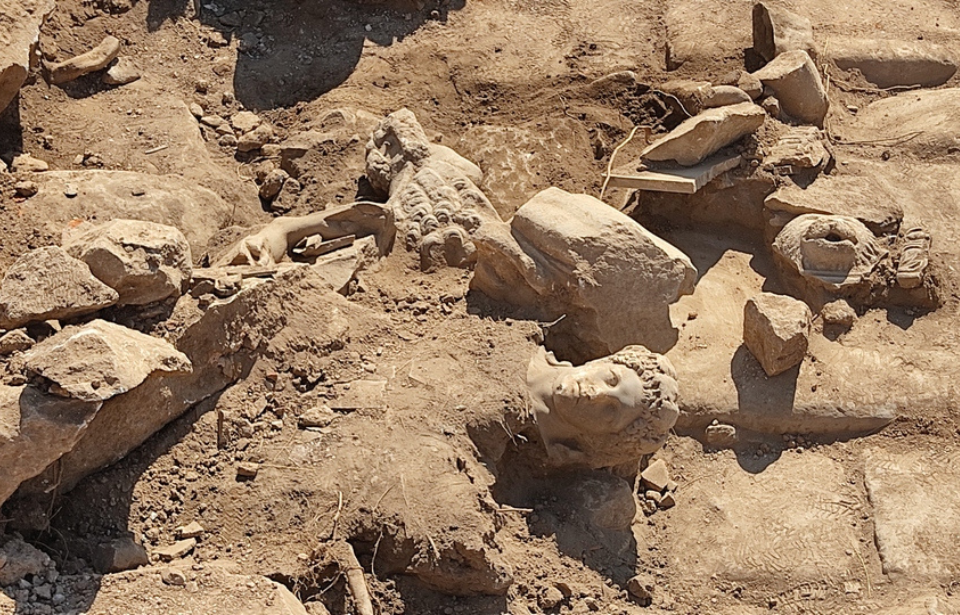Archaeologists conducting a dig in northern Greece have uncovered the remnants of what’s believed to be a nearly 2,000-year-old statue of Hercules. The Roman-era piece was uncovered at the site of what was once the ancient metropolis of Philippi.

According to a statement from Greece’s Ministry of Culture and Sports, the statue was discovered on September 16, 2022, during an excavation by a team of students from the Aristotle University of Thessaloniki. Led by Professor Natalia Poulos and two other collaborators, the dig occurred along the eastern side of one of Philippi’s main streets, near where it and another road intersected.
The intersection was once looked over by a “richly decorated building.” Evidence of what is believed to have been a fountain was also found, on top of which likely stood the statue of Hercules, according to the archaeologists. He’s also adorned with a number of items that further identify him as the ancient Roman depiction of the demigod.
“The building had a special architectural decoration, fragments of which were uncovered,” the statement from the Ministry of Culture and Sports reads. “Its decoration was completed by an impressive statue from Roman times (2nd century AD).
“The statue, whose size is larger than life, depicts Hercules barren with a youthful body. The club, which has been found in fragments, and the lion hanging from the outstretched hand attest to the identity of the hero. On the earl’s crest he wears a wreath of vine leaves which is held at the back by a hand whose ends end at the shoulders.”
Experts say the building that was uncovered dates back to between the 8th and 9th centuries AD, with the statue of Hercules dating back even further, to around the 2nd century AD. This was determined based on similar statues that have been uncovered over the years, which decorated both buildings and public areas during the Roman era, up until the end of the Byzantine Empire.

Hercules was the ancient Roman interpretation of the divine hero Heracles from Greek mythology. He was the demigod son of Zeus, and was known for his strength, courage and boldness.
Experts have long considered Philippi to be one of the most interesting and important archaeological sites in Greece. It’s located along the Via Egnatia, which linked Europe and Asia. The metropolis is said to have been settled by Thasian colonists around 360 BC, under the name Crenides. A few years later, in 356 BC, Philip II of Macedon renamed it after himself.
Philippi was later abandoned in the 14th century, following the Ottoman conquest of the region. It’s since been named a UNESCO World Heritage Site, with a number of buildings and ruins having been uncovered during excavations. These include the remains of a temple, basilicas, a theater and a church.

More from us: Australians Creating ‘Black Box’ to Hold World Accountable for Climate Change
According to the team of archaeologists, excavations at the site will continue in 2023.
